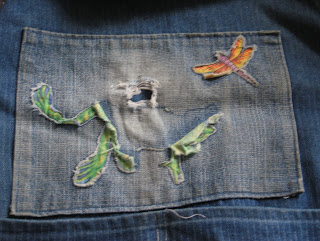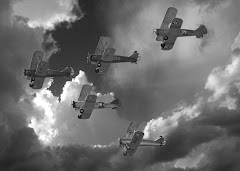I am sewing New Look 6473. My great-niece, Missy Sophea lives about an hour away. It's sometimes difficult to sew long-distance because of fitting issues but this dress did well. Sophea, who is two-years-old is wearing a child's size 2 and is mostly potty-trained. Dresses are pretty forgiving in regards to fitting issues. About the only thing you have to worry about is where the hem falls.
I did some measuring in November when I saw her last. Her arm measurement, neck to waist, waist to floor, etc. and based on my sewing experience and the pattern details, I cut out size 2 on the pattern.
I did some measuring in November when I saw her last. Her arm measurement, neck to waist, waist to floor, etc. and based on my sewing experience and the pattern details, I cut out size 2 on the pattern.
I made a few changes. Well - I had to. Someone at the store decided they needed the instructions more than me as they were missing. I discovered this about a month later when I was ready to cut out pattern pieces. The backside was originally buttoned down the entire back. I nixed this as unnecessary (and drafty). Instead, I cut the back on the fold and from the top, I cut down 5" to make a neck only opening. This pattern has a modified yoke and a little bias tape would finish the raw edges of the slit.
Next up were the pleats on the front side. The pattern piece was no help at all and missing the instructions, I was glad to find this to help. There were three pleats and the middle pleat was easy to pin. The outer two were pinned into place by utilizing the yoke pattern piece to make sure I had the right amount of material used up in the pleats. I utilized the eyeball method. Were the pleats uniform? Same size? Looked right? Used up just enough fabric to match the yoke?
I then sewed the pleats and pressed them open.
I then sewed the pleats and pressed them open.
Next up - trims.
This is a single yoke that you stitch down to the dress. A little rickrack here was nice. I ironed up 3/8" along the edges and then top-stitched the rickrack in place.
When I went to pin the yoke onto the dress - wrong side of yoke to right side of dress - gaping pleats! There was slight miscalculation in the eyeball method of pleat construction and a meeting with the seam ripper was scheduled.
Once you fit the pleats correctly, it's time to sew the yoke to the dress. Thankfully, I looked at the yoke pattern piece once more where about the only thing it did say was to sew the yoke seam at 3/8" instead of the usual 5/8".
Once you sew that seam, you need to manage the seam bulk or the yoke will look bulky in the wrong place. I did a graduated trim on the seam allowances, especially where the excess fabric of the pleats is - where you trim more on one side of the seam allowance than the other as this lies flatter and then I did little snips with my scissors to ease the curves.
Once you sew that seam, you need to manage the seam bulk or the yoke will look bulky in the wrong place. I did a graduated trim on the seam allowances, especially where the excess fabric of the pleats is - where you trim more on one side of the seam allowance than the other as this lies flatter and then I did little snips with my scissors to ease the curves.
Next up is another trick to get the seam allowance to be flatter. Understitching.
Basically, you are sewing down what remains of the seam allowance to the underside. In this case, I understitched the seam allowance to the dress. You follow along your original seam - maybe 1/16" over.Understitching also stabilizes the neckline.
In the photo below, left side is the dress body, right side up. On the right in the photo - is the yoke (rickrack) with the wrong side up.
Usually once you do all the seam prep and the understitching, the facing - or yoke- will fold over and lay down all by itself. A little help with the iron is useful here. I believe the pattern pieces said to cut some interfacing also, but I rarely do.
In the photo below, left side is the dress body, right side up. On the right in the photo - is the yoke (rickrack) with the wrong side up.
Usually once you do all the seam prep and the understitching, the facing - or yoke- will fold over and lay down all by itself. A little help with the iron is useful here. I believe the pattern pieces said to cut some interfacing also, but I rarely do.
Sewing down the single yoke to the top side of the dress.
Tamara did this as well to the corner of her outer pleats to finish the inside. See the corner of the yoke? Well the pleats on either side would have a raw edge corner if you did not fold down a corner of the pleat to catch it into the yoke seam. Not being known for my neat seaming, leaving the raw edge corner flapping here would not only irritate the skin of a two-year-old, but it would have looked crappy.
And finally for today's post, we are up to the armholes.
The pattern had a pattern piece for a self-bias strip to be bound around the armhole. I had double-fold bias tape, 1/4" in two shades of orange and decided to use that instead. This is a child's size 2 so the armhole is a tiny tricky tight curve. I hand-basted my bias tape in place first and then top-stitched it down. A little pressing helps get the curve just right.
The pattern had a pattern piece for a self-bias strip to be bound around the armhole. I had double-fold bias tape, 1/4" in two shades of orange and decided to use that instead. This is a child's size 2 so the armhole is a tiny tricky tight curve. I hand-basted my bias tape in place first and then top-stitched it down. A little pressing helps get the curve just right.
Hand-basting took about a minute but it makes sure bias tape doesn't slither off.
First post of the orange dress.
Final post.





















































